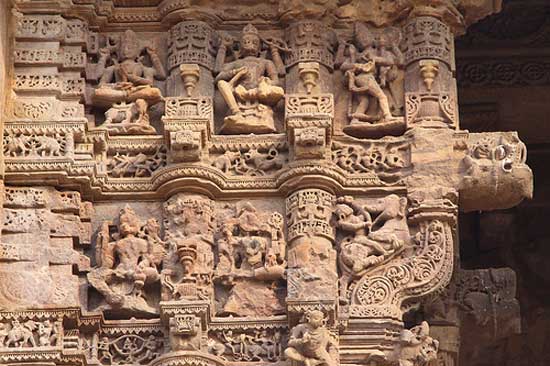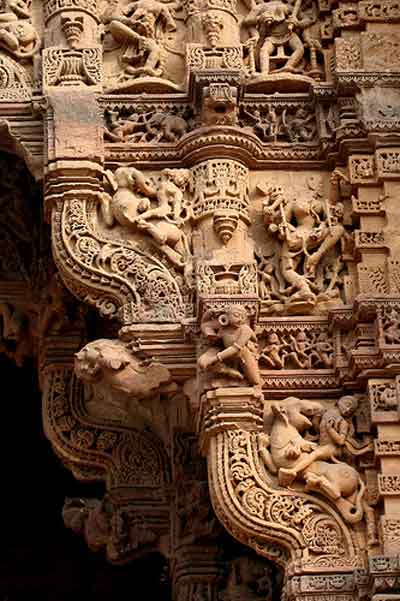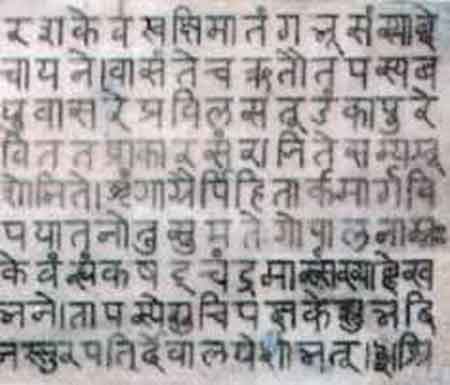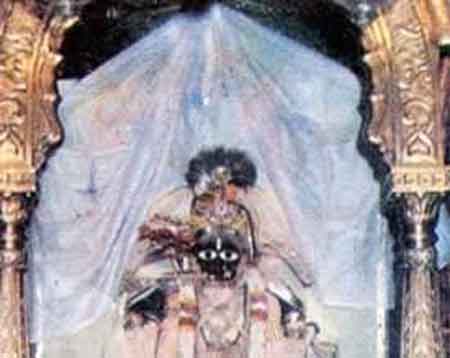Ranchhodraiji Dakor
|
About:
|
|
The Ranchhodraiji Temple in Dakor is a revered Hindu temple dedicated to
Lord Krishna, also known as Ranchhodraiji. It is one of the most
significant pilgrimage sites for Krishna devotees, drawing thousands of
visitors, especially during festivals.
.webp)
|
Location info:
|
| Address:Dakor,Gujrat,India |
| District: Kheda |
| Nearest City: Ahemdabad |
| Best time to visit: November to February |
Climate/Weather:
|
| Summer (March to June): Hot, with temperatures ranging from 32°C to 42°C.
Monsoon (July to September): Receives moderate to heavy rainfall;
temperatures range from 25°C to 35°C.
Winter (October to February): Pleasant and cool, with temperatures ranging
from 12°C to 28°C. The ideal time to visit is during winter. |
History:
|
The temple's history dates back to the 18th century when a devotee named
Bodana brought the idol of Lord Krishna from Dwarka to Dakor.
The idol of Ranchhodraiji is believed to be a manifestation of Lord Krishna.
According to legend, Lord Krishna willingly moved from Dwarka to Dakor to
bless Bodana.
Over the centuries, the temple has been renovated and expanded, with the
current structure showcasing exquisite architectural details.
|
Interesting things to do:
|
| Participate in the daily Aarti and Bhajans dedicated to Lord Krishna, which
are soulful and mesmerizing.
Explore the temple's beautiful carvings and architecture.
Attend the colorful festivals like Janmashtami and Holi, celebrated with
great fervor. |
Interesting things to Visit:
|
|
Ranchhodraiji Temple:
The main temple complex
where you can admire the idol of Lord Krishna and experience the divine
atmosphere.

Dandi:
Dandi a historical place located about 16
km from the district of Navsari is where the Saifee Villa Museum has
been established to commemorate the Dandi Salt March. Built in 1961, the
museum attracts attention to the pictures and artifacts of Gandhi's life
and contribution to the independence of India.
Dastur Meherji-Rana Library:
Dastur Meherji-Rana
Library is rich in literature of the earliest Parsi or Zoroastrian
settlements in Navsari and has many pictures of the old town. It is
located at the Tarota bazar. Another important library is the Sayaji
Vaibhav Library. Ubhrat a sandy white beach 20 km away is a perfect
picnic spot. The Vansda National park has a variety of flora and fauna
to see.
|
Mobile range info:
|
| Mobile network connectivity is good, with coverage from all major service
providers.
|
How to reach?
|
| By Air:The nearest airport is Sardar Vallabhbhai Patel
International Airport, Ahmedabad (about 90 km away).
|
| Nearest Airport: Ahmedabad, Airport |
| Road Transport:State Transport and Luxury buses are
available from Ahmedabad and Vaodara. |
Nearest Visiting places:
|
Galteshwar Mahadev Temple (18 km):
An ancient Shiva
temple situated at the confluence of the rivers Mahi and Galta.
Nadiad (30 km):
Known for its Swaminarayan temples and historic landmarks.
Anand (35 km): Famous for the Amul Dairy and the Vallabh Vidyanagar educational hub.
|
Nearest Petrol Pump:
|
| There are petrol pumps available in Dakor itself and nearby towns like Nadiad and Anand.
|
Hotels/Lodge/Accommodation:
|
| Dharamshalas: The Ranchhodraiji Temple Trust offers comfortable dharamshala accommodations at reasonable rates.
Hotels: There are a few budget hotels and lodges available in Dakor. You can also find more options in Anand and Nadiad.
|
Things to carry:
|
| Comfortable footwear for walking around the temple complex.
Light cotton clothing in summer and warm layers in winter.
Water bottles to stay hydrated, especially during warmer months. |
Tips & Suggestions:
|
| Dress modestly and respect the temple’s traditions and rituals.
Avoid visiting during peak summer due to the heat.
If planning to attend festivals, arrive early as the temple can get crowded. |
Help Line/Phone Number:
|
| Police Station:100 |
Nearest Hospital:
Civil
Hospital:Nadiad,Kheda,Gujarat,India,
Shree Krishna
Hospital:Anand,Gujarat,India |
| Society/Community Phone Number: |
| Links: |
.webp)















